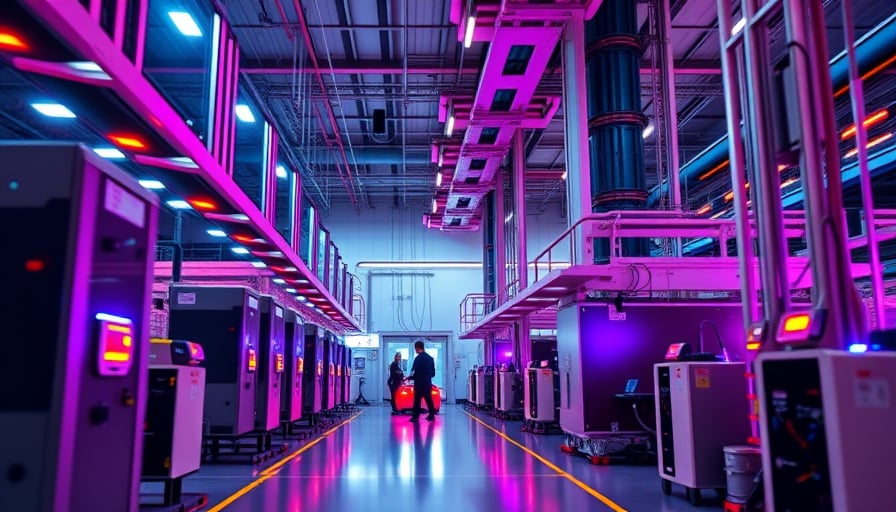Nvidia’s Potential Re‑entry into the Chinese AI Chip Market
Nvidia Corp. has become the center of a new geopolitical debate after Bloomberg reported that U.S. officials are considering allowing the company to ship its H200 AI accelerators to China. The H200, built on Nvidia’s Grace Hopper architecture, is a flagship data‑center processor that delivers up to 1.2 TFLOP/s of double‑precision performance and is a key component in many high‑end AI training pipelines.
Current Export Restrictions and the H200’s Significance
Under the U.S. Export Administration Regulations (EAR), Nvidia’s most powerful data‑center chips—including the H200 and the A100—are restricted from sale in China. The restrictions were imposed in 2021 in response to concerns about dual‑use technology and national security. Consequently, Nvidia has lost a portion of its potential market share in one of the world’s fastest growing AI sectors. Analysts estimate that the company could lose between $200 million and $400 million in annual revenue if the restrictions remain unchanged, given China’s projected AI spending of $80 billion by 2030.
The H200’s architecture, featuring an integrated 2‑D mesh network and an on‑chip memory subsystem, enables training of large language models (LLMs) and computer‑vision workloads with a 30 % reduction in power consumption compared to the A100. For Chinese data‑center operators, this translates into significant cost savings and higher throughput for AI inference tasks.
The U.S. Government’s Position
Reports indicate that the U.S. Commerce Department is reviewing an exemption request that would allow the H200 to be exported under the “Specially Designated Nationals (SDN) List” exception. The request, filed by Nvidia, cites the company’s “non‑dual‑use” status and its historical compliance record. The Commerce Department must weigh the potential benefits—such as a 10–15 % increase in Nvidia’s global revenue—and the risks of enabling advanced AI capabilities in a strategic competitor’s ecosystem.
Dr. Maria Liu, senior fellow at the Center for Strategic and International Studies, notes that “even a limited approval could shift the competitive balance, giving Chinese firms an edge in developing autonomous systems, 5G, and defense‑related AI.” Conversely, the U.S. Department of Commerce has previously granted “dual‑use” waivers to other semiconductor companies (e.g., AMD and Qualcomm) under narrowly defined conditions, suggesting that a similar pathway could be possible for Nvidia.
Financial Market Reaction
Shares of Nvidia traded in the range of $275–$285 per share following the Bloomberg disclosure, reflecting a modest upside of roughly 1.3 %. The price movement was largely driven by speculative bets on a policy shift, rather than any concrete change in product pricing or volume. Market analysts project that a positive decision could lead to a 3–5 % lift in earnings for FY 2025, given the projected growth in China’s AI infrastructure spend. However, the current volatility index for Nvidia remains at 28, indicating that investors are cautious about over‑valuing the potential upside.
Foxconn Partnership and Taiwan Expansion
In a separate development, Nvidia announced a partnership with Foxconn to construct a new data‑center facility in Taiwan. The facility will house over 10,000 GPU‑accelerated servers powered by Nvidia’s H100 and A100 chips, and is slated for completion by Q3 2025. Foxconn’s expertise in large‑scale manufacturing and logistics will help Nvidia scale its supply chain and reduce time‑to‑market for new AI workloads.
The Taiwan hub is part of Nvidia’s broader strategy to diversify its manufacturing footprint beyond the United States. According to industry analysts, this move could reduce production lead times by 15–20 %, improving responsiveness to global AI demand spikes. Additionally, the partnership aligns with Taiwan Semiconductor Manufacturing Co. (TSMC)’s expansion of 7‑nm and upcoming 5‑nm processes, which are critical for delivering the next generation of AI accelerators.
Expert Perspectives
John Martinez, Director of AI Infrastructure at Gartner: “If the U.S. lifts the ban on H200 exports, we anticipate a noticeable uptick in Chinese data‑center deployments, especially in the cloud and edge segments. However, the policy change may prompt a cascade of counter‑measures, such as increased export controls on related components.”
Aisha Khan, Senior Analyst at IDC: “The Foxconn partnership demonstrates Nvidia’s commitment to building resilience in its supply chain. For IT decision‑makers, this partnership signals that Nvidia will continue to provide high‑density GPU solutions with shorter delivery times.”
Dr. Liu (CSIS): “From a national security standpoint, the trade‑off between market access and strategic technology proliferation is complex. Policymakers must carefully weigh the benefits against potential risks to U.S. technological leadership.”
Actionable Takeaways for IT Decision‑Makers
- Assess Vendor Lock‑In Risks
- If your organization relies heavily on Nvidia’s H200 for large‑scale training workloads, monitor policy changes that could alter availability and pricing in China.
- Plan for Supply Chain Diversification
- The Foxconn partnership offers an alternative manufacturing route that may reduce lead times. Consider negotiating multi‑source agreements to mitigate regional disruptions.
- Evaluate Regulatory Impact
- Stay abreast of U.S. export control updates that may affect procurement for multinational operations, particularly in jurisdictions where China is a major partner.
- Cost–Benefit Analysis of AI Investments
- Factor in potential pricing shifts if Nvidia re‑enters the Chinese market. Re‑evaluate ROI models for AI infrastructure projects slated for FY 2025–2026.
- Monitor Geopolitical Developments
- Use real‑time intelligence feeds to capture early signals of policy shifts that could impact the broader semiconductor ecosystem.
Conclusion
While the U.S. government’s deliberations on permitting Nvidia’s H200 chips into China remain preliminary, the implications are far‑reaching. A decision to lift the ban could alter Nvidia’s revenue trajectory, reshape the competitive landscape in China, and influence global supply chains. Simultaneously, the partnership with Foxconn underscores Nvidia’s intent to fortify its manufacturing capabilities in Asia, potentially offsetting any negative repercussions from policy shifts. For IT leaders and software professionals, staying informed and proactively managing vendor relationships will be essential to navigate the evolving AI hardware market.




